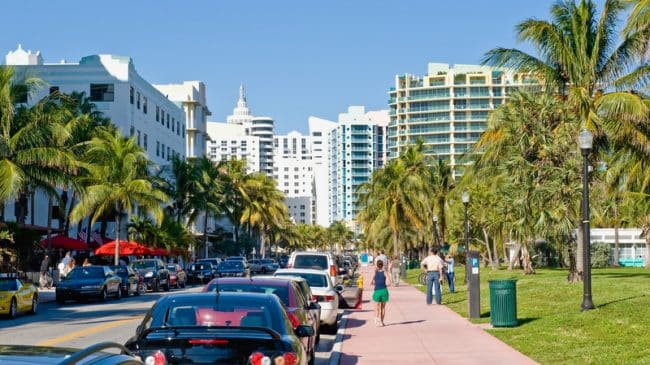As economists who study parking have advocated for years, the Sarasota Parking Advisory Committee, in its new Citywide Strategy for Parking Management report, has recommended paid parking for downtown Sarasota in addition to plans for paid parking and a new parking garage at St. Armands Circle. That would bring Sarasota on board with a trend going on in many cities.
Downtown, as well as Siesta Village and St. Armands Circle, suffer from a lack of parking spaces, and too many people blocking traffic trying to find spaces or waiting for one to open. Sarasota recognizes what so many other cities have found: As with most other goods, prices solve the problem of shortages and waiting in line to determine who gets a good spot.
Economists from Harvard to UCLA have pointed out for years that free parking has many hidden costs and causes congestion and problematic development patterns. The godfather of modern parking management, UCLA professor Don Shoup, wrote the book “The High Cost of Free Parking” and advises cities all over the world on how to improve parking. His recommendations boil down to:
- First, cities should charge the right price for curb parking, so that about 15% of spaces are vacant. That way, drivers will always be able to find one or two open curb spaces per block, and no one will cruise. We can call this the Goldilocks price. If no curb spaces are vacant, the price is too low, and if many spaces are vacant, the price is too high. If about 15% of the spaces are vacant, the price is just right. Parking is like gasoline: Cars use it, so drivers should pay for it.
- Second, cities should return all the increased meter revenue to the metered districts. The parking revenues can pay to clean and repair the sidewalks, light the streets, remove graffiti, plant trees, provide security and put utility wires underground in the metered districts. These public improvements will attract even more customers, some of whom will walk from the surrounding neighborhoods.
No one wants to pay for curb parking – that will never change – but if cities spend the revenue to pay for public services next to the parked cars, many people will begin to see the advantages of charging for curb parking.
I am delighted to see that city staff have built their recommendations for downtown parking on the foundation of Shoup’s recommendations. A crucial addition developed in many tourist-heavy cities is to provide offsite parking that is significantly cheaper and shuttle service connecting it to downtown locations – an element the city staff proposal includes.
A similar service for Siesta Village and St. Armands Circle would be crucial as well, allowing those with more time but less money to park where there is more room and ride a shuttle to their destination. The many available free ride shuttles on Siesta Key would help make priced parking in the Village much more viable, and a similar service is already planned for downtown.
Right now the city spends about $500,000 a year from the general fund to subsidize parking. Paid parking is more efficient and fair, and provides a source of funding for downtown improvements – a big step up from the status quo.
Of course, the city needs to learn from the failed attempt in 2011 to implement parking meters downtown. The system needs to provide options for people to find spaces and pay for parking via a smartphone app and to easily and simply pay at the curb for those who are not so high-tech. Simple, easy-to-understand pricing with readily identifiable violations that makes for low-cost enforcement is ideal.
You don’t have to look far to see this kind of approach. Cities all over Florida charge for parking. I recently went to a lunch meeting in downtown St. Petersburg and when I parked on the street I quickly read the sign, downloaded the app on my phone and paid for my parking. As I travel the country on business I have done the same many, many times.
But the leader in parking management these days is San Francisco. SFPark uses real-time technology and management to price parking variably, shifting as neighborhoods get busier or slower. That ensures there are always one or two spots available every couple of blocks so people won’t block the streets looking for parking. And the price goes down when it is less busy to encourage people to come and park then. The money goes to improvements in the area, so merchants, shoppers, tourists and residents all see benefits from the parking fees. A recent study of SFPark by UC Santa Cruz found the parking program significantly reduced congestion.
Sarasota is very much on the right track with its proposed downtown paid parking plan. I encourage it to proceed and learn from the most successful efforts in other cities. I hope that it will also follow through on proposed parking pricing for St. Armands Circle, and that Sarasota County will explore how parking pricing can help Siesta Village. Paid parking can allow many more people to enjoy those places, patronize those businesses, and fund improvements to the priced neighborhoods that will benefit everyone.
Adrian Moore is vice president at the Reason Foundation and lives in Sarasota.

